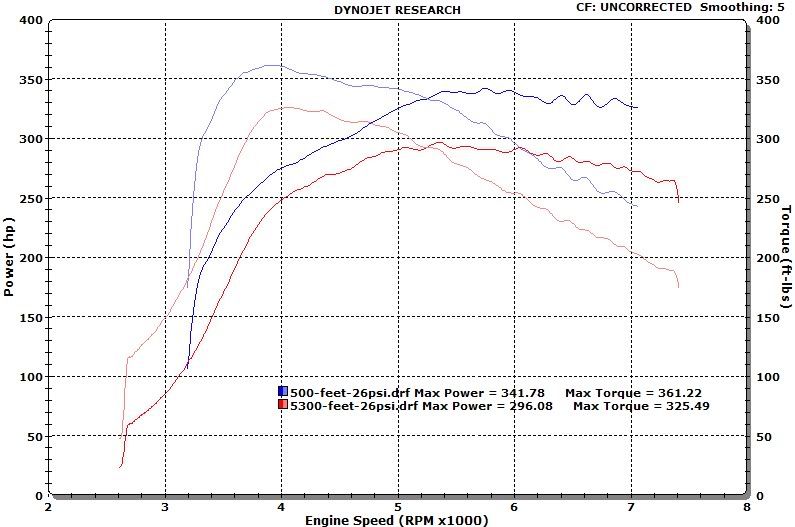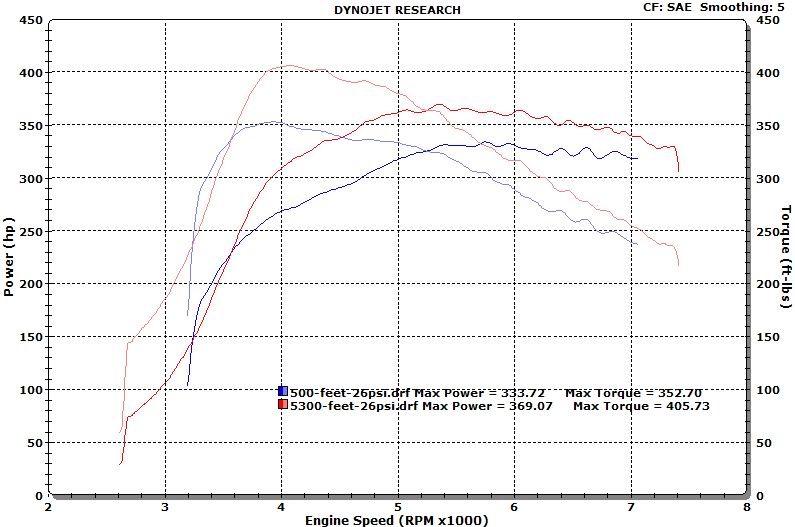Conan":3njbu9uq said:
Ok Razzo, I think we can reach an agreement for 25-30%

But less
than 25 - no way!

True Transmission Losses
So is there any way of really measuring the true transmission loss of a car? Yes - only one - by measuring the flywheel power on an accurate engine dyno, the wheel power on an accurate chassis dyno and taking one away from the other. There is no way on God's green earth of finding out the true transmission loss just by measuring the power at the wheels.
So hopefully that's got you all thinking a bit more now instead of just taking for granted the "flywheel" figure you were given last time you took your car to the rollers. Even worse is the fact that some of these software systems allow the operator to just programme in the % transmission loss he wants the system to add to the wheel figures. So if that isn't a nice easy way to show some big fat flywheel bhp then I don't know of a better one. It's certainly a lot easier than actually doing some proper development work to make the engine perform better - just dial in a bigger transmission loss and bingo - the same wheel bhp now turns into a bigger flywheel bhp - happy customer, happy dyno man - just a shame it was all sleight of hand. See the end of this article if you doubt that this sort of thing really happens.
So what should you do when you take your car to a rolling road? Firstly, make sure you get printouts that show the wheel bhp and not just the flywheel bhp. Then at least you can see if they look sensible in comparison. If you have a desperate need to know the flywheel bhp then you will have to estimate it - there's no other way short of using an engine dyno.
The average front wheel drive road car with between 100 and 200 bhp loses about 15% of the engine bhp as transmission losses.
The average rear wheel drive road car with between 100 and 200 bhp loses about 17% of the engine bhp as transmission losses.
The 2% increase in losses over front wheel drive is because the differential has to turn the drive through 90 degrees at the back axle which soaks up a bit more of the engine's power. Copyright David Baker and Puma Race Engines
4wd cars will have higher losses because of the extra differentials and other power transmission components. The tyre and main gearbox losses will be the same though. Correlating the performance of vehicles with the both 4wd and 2wd options (Audi's and the Sierra Cosworth are examples) (also the gt-four!!!!!!) shows 4wd transmission losses to be about 5% higher than rwd. 22% seems to be a good average.
What each individual car loses is an unknown - it will depend on tyre sizes and pressure, suspension angles and other things, but it shouldn't be far from the figures above. For sure though, no 2wd car in the world, unless it has flat tyres and a gearbox full of sand, loses anything like 30% of the engine's power in the transmission and tyres as many rolling road operators would try to have you believe. In general though it is fair to say that low powered cars have higher % losses than high powered cars. This is because some of the frictional losses are independent of engine power and so represent a bigger drain on a small engine. For example, a 60 bhp Fiesta will have around 14 to 15 bhp total transmission and tyre loss (25%) whereas a 90 bhp XR2 will only have about 17 to 18 bhp loss (20%) - a smaller % obviously. By the time you get to RWD cars with engines in the 300 to 500+ bhp range, losses can eventually drop to as little as 12% to 14% or so.
http://www.pumaracing.co.uk/power3.htm
Its a good read for those people that don't understand how much drivetrain loss there actually is, some of these figures are done with jeeps and other 4wd vehicles, i know the alltrac tranny is one of a kind and is probally only lossing 20-25%.
Like the article says if your lossing up to 30% drivetrain loss you have something wrong mechanicaly. It's the reality :shrug:





